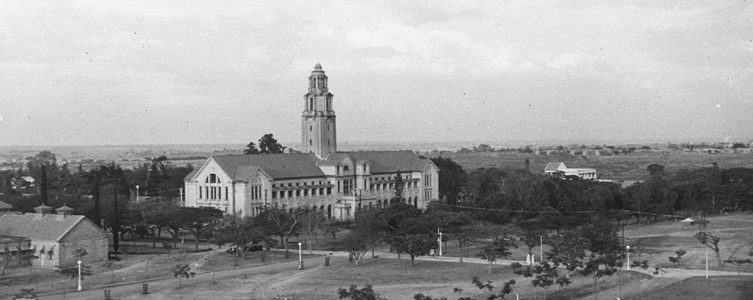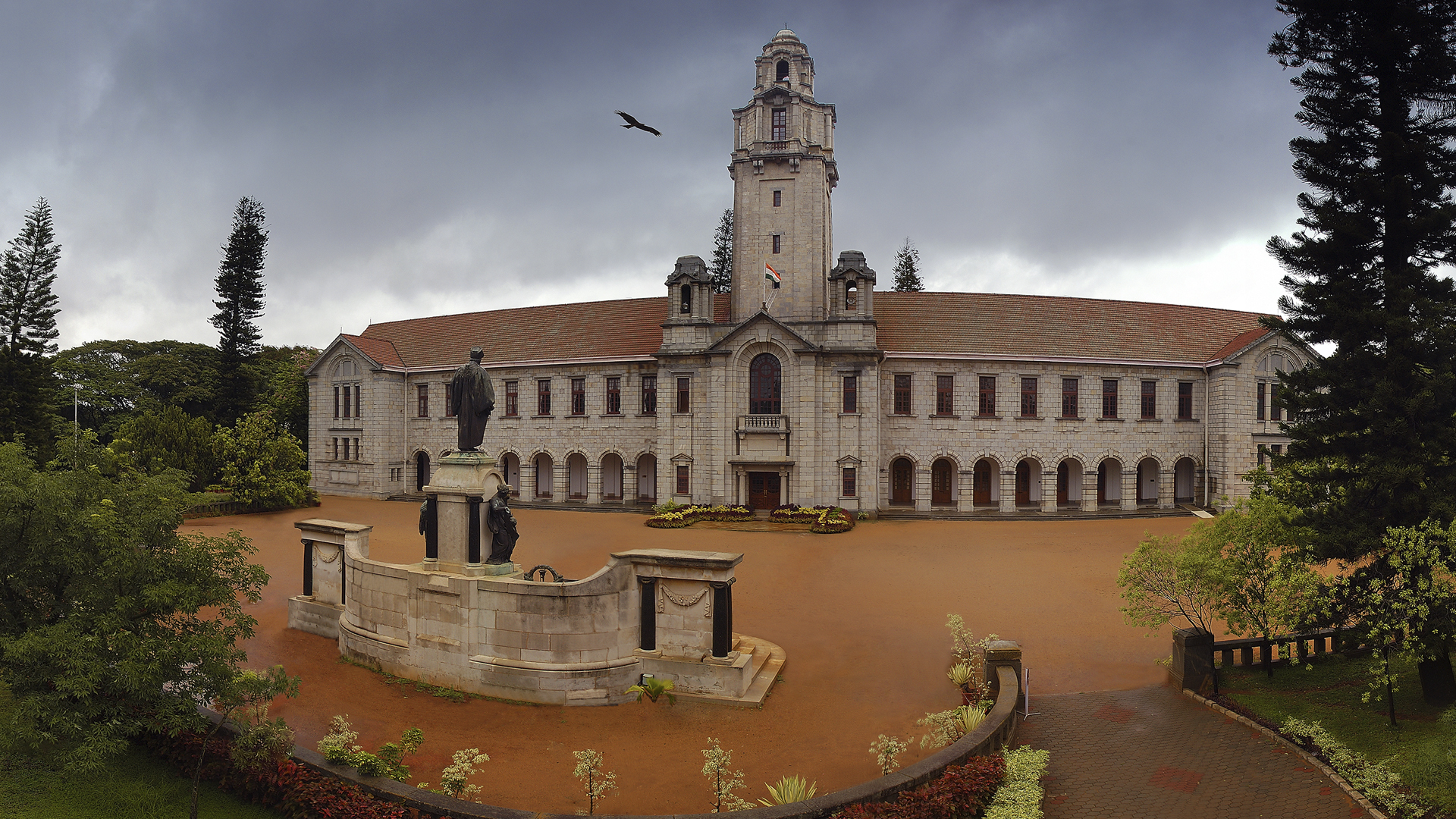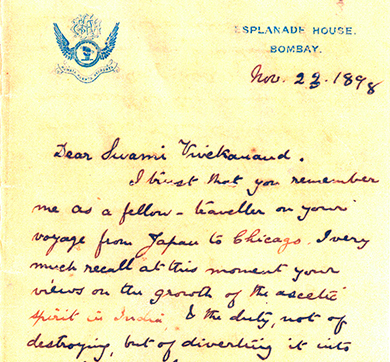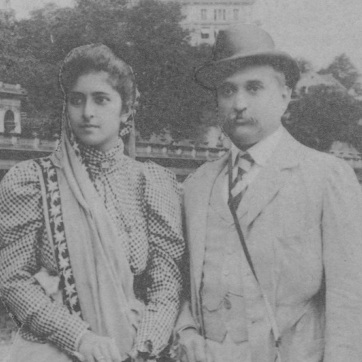"What advances a nation or community is not so much to prop up its weakest and the most helpless, as to lift the best and most gifted, so as to make them of the greatest service to the country."
It was this thought which motivated Jamsetji Tata, the founder of the Tata group, to conceive of establishing an institution of advanced scientific education and research, the like of which even England did not have, at the end of the 19th century.
Jamsetji Tata was convinced that national resurgence was only possible through multi-level industrialisation, higher education and scientific research. "He was a visionary who had personally established industries which were at the forefront of technology in those times. Besides, he donated half of his personal wealth (14 buildings and four landed properties in Bombay [now Mumbai]) for the creation of this institution," says Goverdhan Mehta, director, Indian Institute of Science (IISc).
After consulting several authorities in the country, Jamsetji Tata constituted a provisional committee to prepare the required scheme for the setting up of the Institute. On December 31, 1898, a draft prepared by the committee was presented to Lord Curzon, the viceroy-designate. Subsequently, at the request of the secretary of state for India, the Royal Society of London asked Sir William Ramsay, a Nobel laureate, for help. Sir William made a quick tour of the country and found Bangalore (now Bengaluru) to be the most suitable place for such an institution.
At the initiative of the dewan, Sir K Sheshadri Iyer, the government of Krishnaraja Wodeyar IV, the maharaja of Mysore, came forward with an offer of 372 acres of land, free of cost, and promised other necessary facilities. Thus Jamsetji Tata's original scheme became a tripartite venture, with the association of the Government of India and the Mysore maharaja.
In 1911, the Maharaja of Mysore laid the foundation stone of the institute and, on July 24 that year, the first batch of students was admitted in the departments of general and applied chemistry, organic chemistry and electro-technology. Since then, IISc has grown into a premier institution of research and advanced instruction, with more than 2,000 active researchers working in almost all the frontier areas of science and technology.
During past decades, Nobel laureate CV Raman, Homi J Bhabha, Vikram S Sarabhai, JC Ghosh, MS Thacker, S Bhagavantam, Satish Dhawan, CNR Rao and many others who have played a key role in the scientific and technological progress of India have been closely associated with the Institute.
IISc has helped create and nurture other laboratories and scientific institutions within the country. The Tata Institute of Fundamental Research and the Atomic Energy Commission were born here. In fact, Homi Bhabha wrote the proposals for creating both these institutions when he was part of the faculty of the Institute. The Indian space programme, too, was developed here. It also enabled CV Raman to undertake research in light scattering, which eventually won him the Nobel Prize in 1930.
Says Dr Mehta, "Jamsetji's vision was that the Institute should commit itself to the quest of excellence for the betterment of people. That has been IISc’s endeavour for close to a century: to be at the forefront of research for the benefit of humankind and the people of India. It is a not a one-time activity, but an ongoing process."
JRD Tata, the late chairman of the Tata group, took a keen interest in the Institute. He believed that it should contribute not just to science but to society as a whole, while emphasising the social relevance of science. "He took good care of the employees and even helped start the Tata Memorial Sports Club, which he regularly visited," says NV Raghavan, the Institute's public relations officer.
JRD paid great attention to the maintenance and upkeep of the buildings. Ratan Tata, Chairman, Tata Sons, is continuing this legacy. In recent times, he has helped promote the Sir Dorabji Tata Centre for Tropical Diseases and assisted with the maintenance of the structure.
The world of science and technology has metamorphosed since the establishment of the IISc. The Institute has tried to keep pace, in terms of training its people and in its research contributions, which are widely recognised in India and abroad. "The contribution of institutes like ours should be judged on how they have enriched the intellect of science and technology in the country," says Dr Mehta. "We have manned some prestigious and nationally important missions and projects."
The Institute has also started the process of celebrating its centenary, while defining its goals for the next century of its existence. "My dream is to transform it into an international institute of science," adds Dr Mehta. "I believe we have done our best and maintained the vision of the founder. His spirit is still present here."

Facts about IISc
After a long wait of more than a decade, the Indian Institute of Science (IISc) was finally established in the year 1911.
- By the time the institute broke ground, Jamsetji Tata had passed away and the initiative was being driven by his sons.
- At its inception, the institute was run jointly by the Tatas, the Government of India and the Government of Mysore (now Karnataka), marking the first example of a public-private partnership in the country.
- The Institute of Science was earlier named the Imperial University of India.
- Morris Travers was chosen as the first director of the Institute.
- The industrial genius M Visvesvaraya was closely associated with the management of the institute for three decades.
- It was here that Homi Bhabha visualised the Tata Institute of Fundamental Research (TIFR).
- The institute enabled scientist CV Raman (the institute’s first Indian director who also initiated the Physics department in 1933) to undertake research in light scattering, which eventually won him the Nobel Prize in 1930.
- Over the last century, IISc has grown into a premier institution of research and advanced instruction, with more than 2,000 active researchers working in almost all the frontier areas of science and technology.
- The institute has also manned prestigious and nationally important missions and projects in the field of science.



